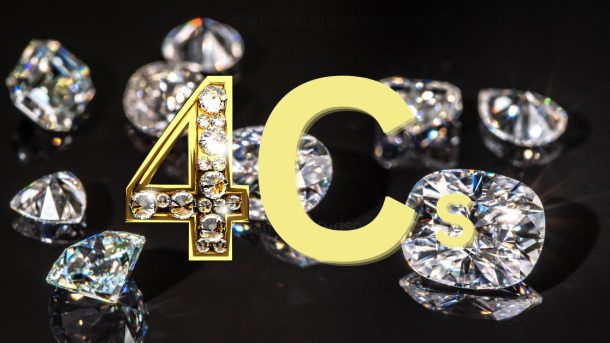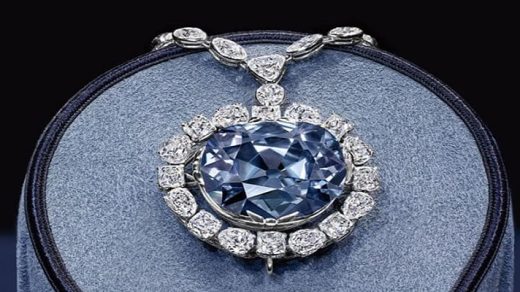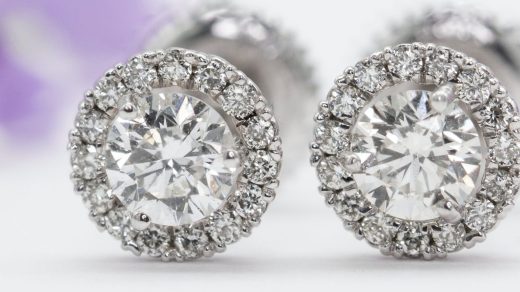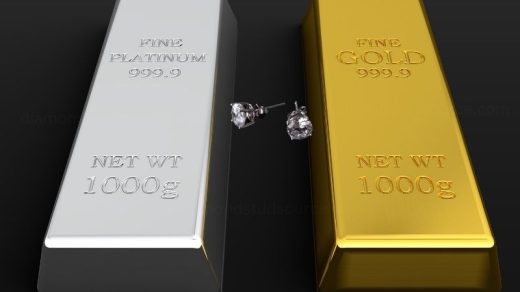Introduction to the 4 Cs of Diamonds
When embarking on the journey to buy a diamond, many questions often arise. How can I ensure I’m getting the best quality? What factors should I prioritize? Among the myriad concerns, understanding the 4 Cs of diamonds—carat weight, cut, color, and clarity—is essential. These four criteria significantly influence a diamond’s beauty, quality, and value.
The concept of the 4 Cs was introduced by the Gemological Institute of America (GIA) in the 1940s to standardize diamond grading. This system provides a universal language for jewelers and consumers to evaluate diamonds consistently and accurately.
Why Are the 4 Cs Important?
Each of the 4 Cs plays a pivotal role in determining a diamond’s overall appeal. While some might argue that the cut or clarity holds more importance, it’s essential to consider all four aspects to make an informed decision. For instance, a diamond’s carat weight often captures immediate attention due to its direct correlation with the diamond’s size and, consequently, its price.
If you’ve ever wondered how to balance these factors effectively, you’re not alone. Many buyers find themselves weighing the significance of each C, trying to determine which aspect deserves more emphasis. This guide aims to demystify the process, particularly focusing on understanding carat weight and its impact on your diamond choice.
Real Questions and Concerns
Many of my clients ask: “Does a higher carat weight always mean a better diamond?” or “How much should I focus on carat weight versus cut or clarity?” These are valid concerns because carat weight is often perceived as the most straightforward indicator of a diamond’s value. However, it’s crucial to understand that a diamond’s carat weight alone does not determine its beauty or worth. The interplay between carat, cut, color, and clarity ultimately defines a diamond’s true value.
Linking Out to Trusted Resources
For those looking to delve deeper into how carat weight affects diamond selection, there are comprehensive guides available. For instance, learning about the 4Cs of Diamonds can provide a broader perspective on how each factor contributes to a diamond’s overall quality.
By the end of this guide, you’ll be equipped with the knowledge to make a well-informed purchase, ensuring that the diamond you choose is not only beautiful but also a great investment. Let’s dive into the fascinating world of carat weight and uncover how this fundamental aspect influences your diamond-buying experience.
Carat Weight: The Basics
What is Carat Weight?
When you think of a diamond, carat weight is likely one of the first attributes that comes to mind. It’s a term frequently mentioned, yet often misunderstood. Carat weight refers to the measurement of a diamond’s weight, not its size. One carat is equivalent to 200 milligrams, and diamonds are measured to the hundredth decimal place for precise grading. For example, a diamond might weigh 1.05 carats, indicating it is just over one carat.
Historical Background of Carat Measurement
The term “carat” originates from the carob seed, which was historically used by gem traders as a counterweight on balance scales. These seeds were remarkably uniform in weight, making them ideal for measuring precious stones. Over time, this system evolved, and the carat was standardized to the metric system we use today.
Why Carat Weight Matters
Carat weight is a crucial factor because it directly influences a diamond’s price. Larger diamonds are rarer, and therefore, more valuable. However, it’s important to note that two diamonds of the same carat weight can have vastly different values based on their cut, color, and clarity.
Relationship Between Carat Weight and Price
The price of a diamond increases exponentially with its carat weight. This is because larger diamonds are rarer than smaller ones. For instance, a 2-carat diamond is significantly more expensive than two 1-carat diamonds of similar quality. This exponential increase is due to the rarity of larger diamonds, making them more sought after and valuable.
Visual Impact of Carat Weight
Many buyers equate carat weight with the physical size of the diamond, but this can be misleading. The cut of the diamond significantly affects how large it appears. A well-cut diamond can look larger than a poorly cut diamond of the same carat weight. The diamond’s shape also plays a role; for example, a 1-carat round diamond might look smaller than a 1-carat marquise or pear-shaped diamond due to the distribution of weight.
Understanding these nuances is crucial when selecting a diamond. It helps ensure that you are not only choosing a beautiful stone but also getting the best value for your investment.
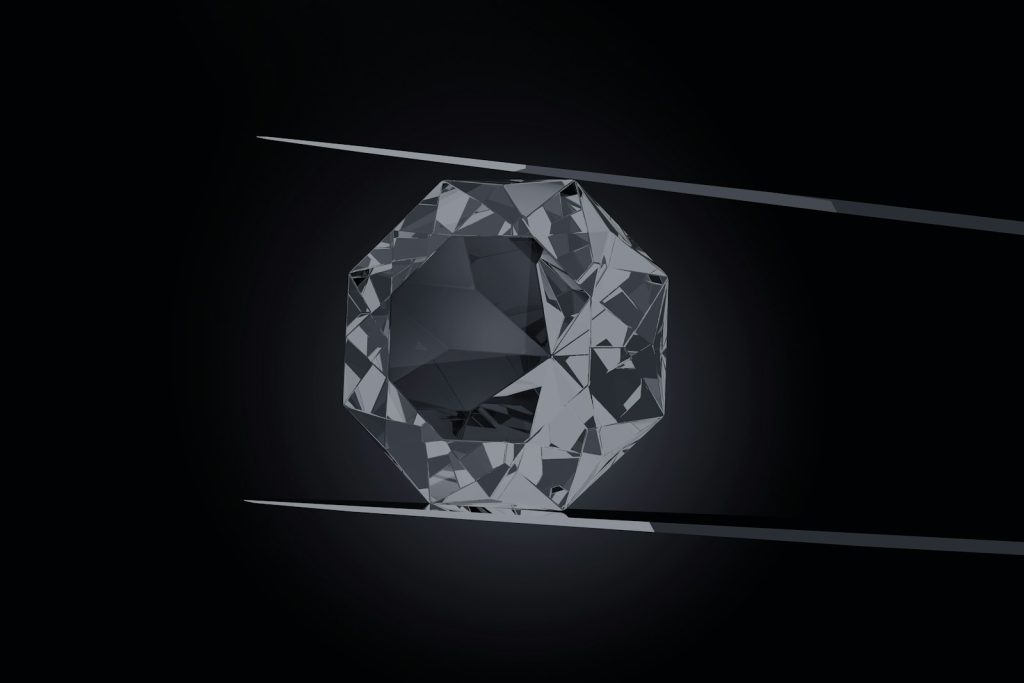
How Carat Weight Affects Diamond Size and Appearance
Carat vs. Size: Understanding the Difference
Many people often conflate carat weight with the size of a diamond, but these terms aren’t synonymous. While carat weight refers to the actual weight of the diamond, its size is influenced by several factors, including the diamond’s cut and shape. For instance, two diamonds can have the same carat weight but appear different in size due to their shapes and cut quality.
A 1-carat diamond can appear smaller or larger depending on how well it’s cut. A well-cut diamond reflects light better, making it appear more brilliant and, sometimes, larger. On the other hand, a poorly cut diamond can look smaller and less vibrant, regardless of its carat weight.
Visual Comparisons of Different Carat Weights
Visualizing how different carat weights compare can be incredibly helpful when choosing a diamond. Below are some general comparisons:
- 0.5 Carat: Approximately 5.2mm in diameter. This size offers a balance between noticeable size and affordability.
- 1.0 Carat: Around 6.4mm in diameter. A classic choice, offering a substantial presence without overwhelming.
- 2.0 Carats: Roughly 8.1mm in diameter. A statement piece, significantly more expensive due to its rarity.
- 3.0 Carats and above: Varies widely, but these diamonds are rare and expensive, often used in high-end jewelry.
These measurements can vary slightly based on the diamond’s cut and shape. For instance, a 1-carat round diamond will look different from a 1-carat pear-shaped diamond due to the distribution of the weight.
Factors Influencing Carat Weight Perception
Several factors can influence how we perceive a diamond’s size, beyond just its carat weight.
- Diamond Cut and Its Effect on Size Perception The quality of the diamond’s cut significantly impacts its appearance. A well-cut diamond will maximize light return, making the diamond sparkle more and appear larger. Conversely, a deep or shallow-cut can make a diamond look smaller and less vibrant.
- Shape and Carat Weight Distribution The diamond’s shape also plays a crucial role in its perceived size. For example:
- Round Brilliant: Often appears smaller per carat compared to other shapes due to its circular shape and depth.
- Oval, Pear, and Marquise: These shapes tend to appear larger per carat because of their elongated forms, which stretch out the diamond’s surface area.
- Emerald and Asscher: These cuts have a larger surface area on the top, making them look larger from above.
In summary, while carat weight is a critical factor in determining a diamond’s value and appearance, it is the interplay with cut and shape that ultimately dictates its visual impact. Being informed about these nuances will help you make a better, more confident decision when purchasing your diamond.
Carat Weight and Diamond Buying Guide
Budgeting for Carat Weight
When you’re shopping for a diamond, setting a budget is essential. It’s easy to get carried away by the allure of larger carat weights, but it’s crucial to balance this with the other 3 Cs: cut, color, and clarity. A higher carat weight often leads to a significant increase in price, so understanding how to allocate your budget can help you get the best value for your money.
Here’s how you can approach budgeting for carat weight:
- Prioritize Cut Quality: A well-cut diamond will look more brilliant and larger than a poorly cut diamond of the same carat weight.
- Consider Near-Colorless Grades: Diamonds in the G-H range are nearly colorless but cost less than D-F grade diamonds.
- Opt for Eye-Clean Clarity: Instead of aiming for flawless clarity, look for diamonds that are eye-clean, where inclusions aren’t visible to the naked eye.
Common Carat Weights for Engagement Rings
Engagement rings come in various carat weights, and the choice largely depends on personal preference and budget. Some common carat weights include:
- 0.5 Carat: A popular choice for its balance between size and affordability.
- 1.0 Carat: The classic and most sought-after carat weight for engagement rings, offering a significant presence without being overly expensive.
- 1.5 to 2.0 Carats: For those looking for a larger diamond with a bit more impact.
- 3.0 Carats and Above: These diamonds are rare and make a bold statement but come with a higher price tag.
Tips for Maximizing Value Based on Carat Weight
Getting the best value for your money involves more than just choosing the highest carat weight within your budget. Here are some tips to maximize value:
- Look for Slightly Lower Carat Weights: Diamonds just under popular weights (like 0.9 carats instead of 1.0) can be significantly cheaper while appearing nearly the same size.
- Choose Shapes Wisely: Certain shapes like oval, marquise, and pear appear larger per carat compared to round diamonds due to their elongated shapes.
- Compromise on Color and Clarity: Slight compromises on color and clarity can allow you to afford a larger diamond. Remember, a well-cut diamond will still appear stunning even if it’s not perfectly colorless or flawless.
Certification and Carat Weight
When purchasing a diamond, always insist on certification from a reputable gemological laboratory such as the Gemological Institute of America (GIA). Certification ensures that the carat weight and other attributes of the diamond are accurately documented.
- Importance of Certified Carat Weight: Certification provides peace of mind that you’re getting exactly what you’re paying for. A certified diamond has been evaluated by unbiased experts, ensuring its quality and authenticity.
- Role of GIA and Other Certification Bodies: The GIA is renowned for its stringent grading standards. Other reputable bodies include the American Gem Society (AGS) and the International Gemological Institute (IGI).

Diamond Stud Earrings And Carat Weight
Diamond stud earrings are a timeless and elegant accessory, often chosen for their simplicity and brilliance. When selecting diamond studs, carat weight is a key factor to consider, as it significantly impacts the overall look and cost of the earrings.
Choosing the Right Carat Weight for Stud Earrings
Selecting the appropriate carat weight for diamond stud earrings depends on several factors, including personal preference, budget, and intended use. Here are some guidelines to help you make an informed decision:
- Everyday Wear: For daily wear, diamond studs between 0.25 and 0.5 carats each are popular choices. They offer a subtle sparkle that is perfect for a classic, understated look without being too ostentatious.
- Special Occasions: If you are looking for a pair that makes a statement for special events, consider diamonds that are 1 carat each or more. These larger stones are sure to catch the eye and add a touch of glamour.
- Balancing Size and Budget: Smaller diamonds (under 0.5 carats each) are generally more affordable, making them a great option if you’re working with a limited budget. As carat weight increases, so does the price, often exponentially. Therefore, it’s important to balance size with other qualities like cut, color, and clarity.
Visual Impact of Carat Weight in Stud Earrings
The visual appeal of diamond stud earrings is not solely dependent on their carat weight. The cut and setting also play crucial roles in how large and brilliant the diamonds appear. For example, a well-cut diamond will maximize light return, making the studs look more brilliant and noticeable.
- Cut Quality: Opting for excellent or very good cut grades ensures that the diamonds reflect light optimally, enhancing their sparkle and making them appear larger than their actual carat weight might suggest.
- Setting Style: The setting can influence the perceived size of the diamonds. Prong settings, for instance, allow more light to enter the diamonds, increasing their brilliance and visual size. Bezel settings, which encase the diamond, can make the stones appear smaller but offer more protection.
Practical Tips for Buying Diamond Stud Earrings
When shopping for diamond stud earrings, consider the following tips to get the best value for your investment:
- Certification: Always purchase certified diamonds to ensure their quality and authenticity. Look for certificates from reputable organizations like the GIA or AGS.
- Match Pair: Ensure that the diamonds in each earring are well-matched in terms of carat weight, cut, color, and clarity. Mismatched diamonds can detract from the overall appearance.
- Try Different Sizes: If possible, try on different sizes to see how they look on your ears. The right size will depend on your personal style and the occasion for which you’re purchasing the earrings.
FAQs
- What is the ideal carat weight for diamond stud earrings?
The ideal carat weight for diamond stud earrings varies based on personal preference and intended use. For everyday wear, diamonds between 0.25 and 0.5 carats each are popular, offering a subtle yet elegant sparkle. For special occasions or a more striking look, diamonds of 1 carat each or more are often preferred. - How does carat weight impact the price of diamond stud earrings?
Carat weight significantly affects the price of diamond stud earrings. Larger diamonds are rarer and therefore more expensive per carat. For example, a pair of 1-carat diamond studs will typically cost more than a pair of 0.5-carat studs due to their increased size and rarity. - Should I prioritize carat weight over cut, color, and clarity for diamond stud earrings?
While carat weight is important, the overall beauty of diamond stud earrings is greatly influenced by the cut, color, and clarity. A well-cut diamond will sparkle more and appear larger than a poorly cut diamond of the same carat weight. Therefore, it’s advisable to balance all four Cs to achieve the best value and appearance. - What are the benefits of choosing a higher-carat weight for diamond stud earrings?
Choosing a higher carat weight for diamond stud earrings can make a bold statement, as larger diamonds tend to stand out more and offer greater brilliance. However, higher carat weight also means a higher price, so it’s important to balance size with quality factors like cut, color, and clarity to ensure a stunning pair of earrings. - How do I ensure my diamond stud earrings match in carat weight and quality?
To ensure your diamond stud earrings are well-matched, check that both diamonds have the same carat weight and similar grades for cut, color, and clarity. Purchasing certified diamonds from reputable sources can provide assurance of their quality and consistency. - Can smaller-carat weight diamonds still look impressive in stud earrings?
Yes, smaller-carat weight diamonds can still look impressive, especially if they have an excellent cut that maximizes their brilliance. Well-cut diamonds will reflect light beautifully, making them appear larger and more vibrant even if their carat weight is lower. - What is the best carat weight for engagement rings?
The best carat weight depends on personal preference and budget. However, 1.0 carat is a popular choice for its classic appeal. - How does carat weight affect a diamond’s price?
Carat weight significantly influences a diamond’s price, with larger diamonds being rarer and more expensive per carat. - Can two diamonds with the same carat weight look different in size?
Yes, the appearance of size can vary based on the diamond’s cut and shape. A well-cut diamond can appear larger and more brilliant.
In conclusion, while carat weight is a critical factor in determining a diamond’s value and appearance, it is most effective when considered alongside cut, color, and clarity. This holistic approach ensures that the diamond you choose is not only beautiful but also a wise investment.
© 2024 by diamondstudsource. All rights reserved. No part of this document may be reproduced or transmitted in any form or by any means, electronic, mechanical, photocopying, recording, or otherwise, without prior written permission of diamondstudsource.com.

